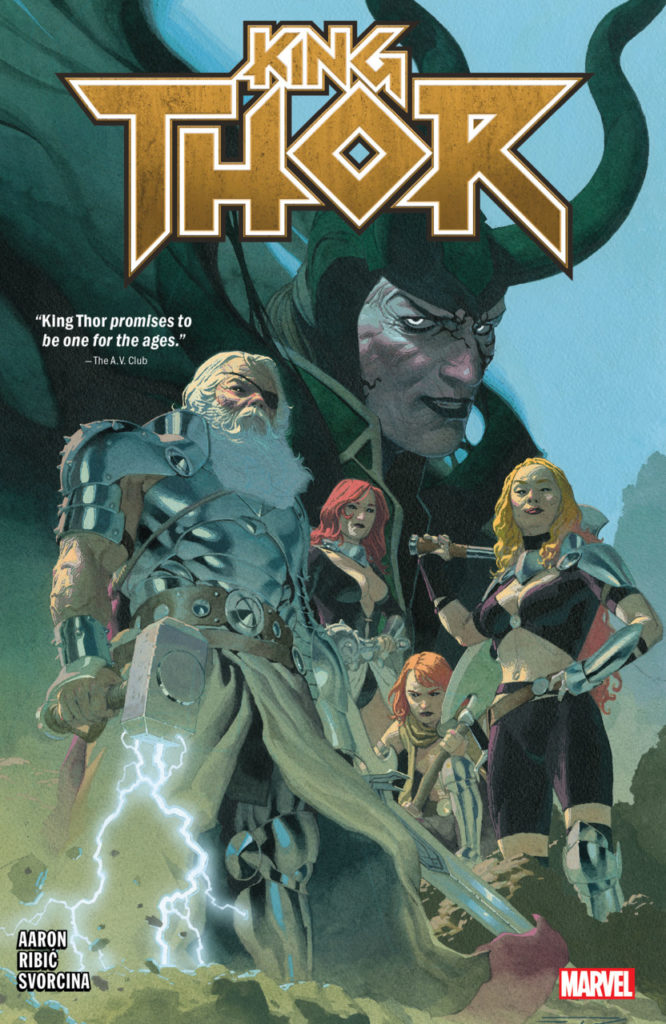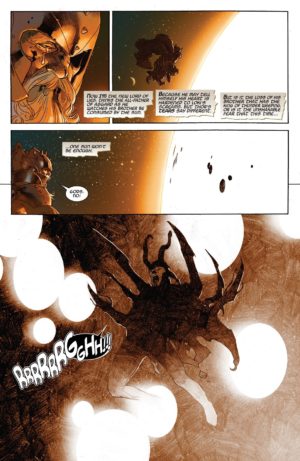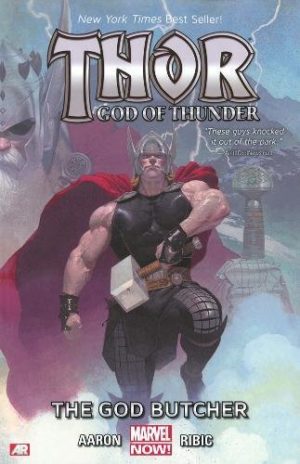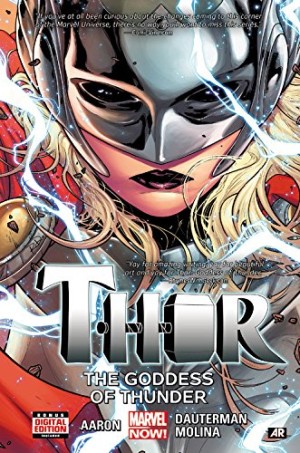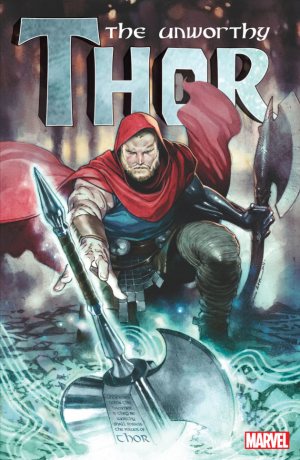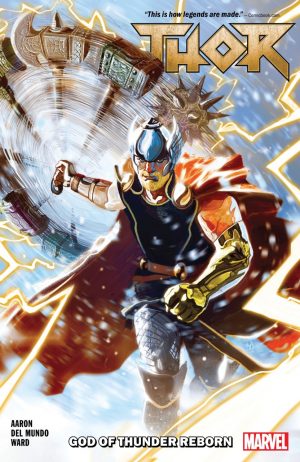Review by Ian Keogh
Jason Aaron began his long and critically acclaimed run on Thor in the company of Esad Ribić back in 2013, and that’s the way he ended it seven years later. They looked in on Thor at different ages along the way, and King Thor is the version from the far future, trapped behind a barrier for nine hundred years, the remainder of Asgard’s population enslaved elsewhere and only recently returned. These include Thor’s granddaughters Atli, Elli and Frigg. Life has been restored to Earth, but the remainder of the universe appears to be dying, and there’s one person who wants to hurry it along the way. That would be Loki, who’s now acquired the power of the God Butcher, so may be in a position to get his way.
Aaron’s use of Thor’s half-brother and arch-enemy has been sparing, possibly because his run coincided with Marvel realising Loki could be a sardonic headliner in his own right, but here we have the spiteful and vindictive personification of sibling jealousy and hatred. There’s a further threat, one best discovered without ruining Aaron’s surprise, and also phenomenally powerful.
Towering grandeur and infinite power are stock in trade for Ribić, who duly delivers on an ever more epic scale than on earlier stories. However, his art is greatly dependent on colourist Ive Svorcina giving it some depth that would otherwise be absent over the majority of the action pages. Ribić is no single trick pony, though, and a few sequences benefit from the thought applied to varying his style (and Svorcina the colour), before ending with a killer image of Thor.
To an extent Aaron is retreading that hoary old chestnut of Raganarok, but setting it in the far future with an already devastated universe restores the terror to the devalued device. So that works, but in places there’s a narrative awkwardness about King Thor. Thor’s granddaughters aren’t given enough space before a crucial intervention, after which there’s an unsubtle infodump. It’s actually a neat touch, picking up what seemed some minor closure as Aaron concluded Godbomb, but could have been better incorporated. The scenes contrived to give some other artists guest spreads tie into the idea of stories still to come are conceptual, but come across as Aaron not wanting to let go. Some of those artists have worked on Aaron’s Thor, and Oliver Coipel on an earlier incarnation, and others are just here for the hell of it. The good far outweighs the quibbles, though. The consideration Aaron applies is there in a resonant scene toward the end where Thor wakes, up, picks up his hammer and gazes into it to see if he’s still worthy. That’s the Thor we all want.
Over the years Thor has been a series that’s entered extended doldrum periods without enough heights to compensate. The balance is still in the negative, but Aaron’s gone one hell of a distance toward raising it back to parity.
